HTC One max Review - It's Huge
by Brian Klug on October 28, 2013 10:00 AM EST- Posted in
- Smartphones
- HTC
- Mobile
- One
- Snapdragon 600
- Android 4.3
- One max
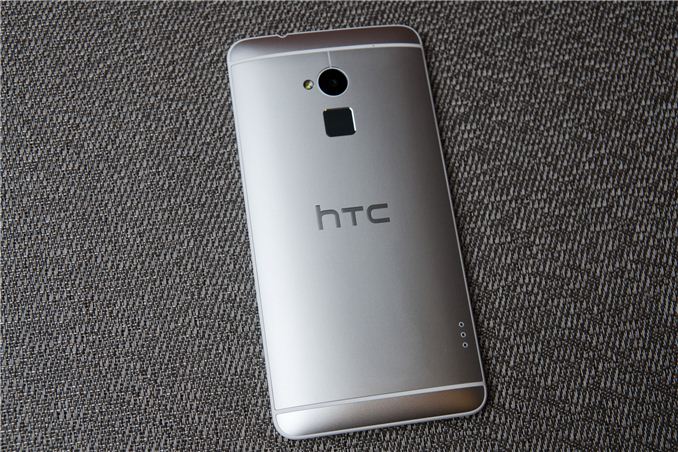
Big phones are all the rage right now. Although tablets promised the kind of extra screen real estate that would increase productivity while still retaining portability, there’s ultimately nothing more likely to be on your person than a phone. I wager that at least some of the success of the supersized smartphone form factor is still that a phone is ultimately always on your person, while a tablet still isn’t.
Today we’re looking at HTC’s newest member of its flagship One series, and its largest, the aptly named One max. Although HTC has been no stranger to larger display form factors (remember how big the HD2 seemed back in 2009?), the One max is to my knowledge the largest smartphone HTC has ever made, eclipsed only by the short lived HTC Flyer and Jetstream tablets. In the HTC phone portfolio, it’s easily the largest smartphone they’ve ever made, and that’s noteworthy.
The strategy for HTC’s One lineup seems to have been a simple one, differentiated by display size and form factor. We saw the flagship, dare I say midsized HTC One come first, then the smaller, lower end HTC One mini, and finally the huge HTC One max.
At a high level this strategy is pretty basic - offer three form factor options that yield almost the same experience. All three are predominately metal and share roughly the same industrial design notes, featuring an aluminum backside with top and bottom notches for antennas, center mounted camera, and LED flash. On the front, big stereo speaker grilles at the top and bottom, and the same button arrangement, just back and home.
I never had a problem locating the power button on the One, but then again I apparently have longer fingers than most. The power button moves down below the volume rocker on the One max, which does make sense since using your thumb to actuate power naturally positions your index finger right next to the fingerprint scanner.
I have no complaints about the buttons on the One max, they seem different somehow but still are communicative and don’t rattle around.
Up top there’s the headphone jack and IR port, which is slightly recessed. It isn’t the power button this time, just an IR window.
| HTC One mini | HTC One | HTC One max | |
| Height | 132 mm | 137 mm | 164.5 mm |
| Width | 63.2 mm | 68 mm | 82.5 mm |
| Thickness | 9.25 mm | 9.3 mm | 10.29 mm |
| Mass | 122 grams | 143 grams | 217 grams |
| Display Size | 4.3-inch | 4.7-inch | 5.9-inch |
| Display Resolution | 1280 x 720 | 1920 x 1080 | 1920 x 1080 |
| SoC |
1.4 GHz Snapdragon 400 (4x Krait 200) |
1.7 GHz Snapdragon 600 (4x Krait 300) |
1.7 GHz Snapdragon 600 (4x Krait 300) |
| Camera | 4 MP F/2.0 Ultrapixel with LED | 4 MP F/2.0 Ultrapixel with OIS and LED | 4 MP F/2.0 Ultrapixel with LED |
| Battery | 1800 mAh, 3.8V, 6.84 Whr | 2300 mAh, 3.8V, 8.74 Whr | 3300 mAh, 3.8V, 12.54 Whr |
| WiFi | 802.11a/b/g/n | 802.11a/b/g/n/ac | 802.11a/b/g/n/ac |
| Storage | 16 GB NAND | 32 GB NAND | 32 GB NAND + microSD |
If the dynamic range in size between the One mini and One is a 2 on an arbitrary scale of 1–10, the dynamic range between the One and One max is at least a 9. While the One mini really isn’t that much smaller than the normal One, the One max lives up to its namesake in a dramatic fashion. It’s positively huge, it literally is the One design taken to the max. The One max makes the Note 3 feel almost normal by comparison, and the entire normal sized 5-inch smartphone demographic feel downright small.
The One max is definitely a two-hand device, one handing it is difficult if not impossible, although I doubt that was anyone’s goal for this thing. It’s big in 2D dimensions, and it’s also somewhat heavy, at 217 grams, but I guess that’s expected given the material choices.
What’s interesting about the One max is that the truth is that its design is a lot more like a vastly larger One mini than it is the original One. We saw the mini come after the One and bring a plastic lip rather than the gorgeous diamond-machined edge that the One had, partly for cost reasons, partly for survivability when dropped on a hard surface. Truth be told, I can understand the rationale for having a plastic ring around the device and it making drops and blemishes a bit less destructive. I filed my HTC One down after a drop to my tile floor dented the chamfered edge a bit. The tradeoff however is that you’re now touching more plastic than metal.
I was initially turned off by the glossy plastic ring around the One mini, but if that was what had to take a hit to make the One mini the right price point for HTC to sell into operators and still make money, I was willing to deal with it. I’ll leave discussion of the faux-metal plastic speaker grille on the One mini for another day, which thankfully the One max doesn’t have.
Anyhow the One max inherits the same plastic ring around the edge design that the One mini debuted with. The polymer has been changed slightly, it’s a more matte, grittier finish that makes it a bit grippier and less chintzy feeling than the One mini’s slippery, glossy finish. The One max also includes aluminum speaker grilles, not the faux-metal plastic cutouts that adorn the One mini.
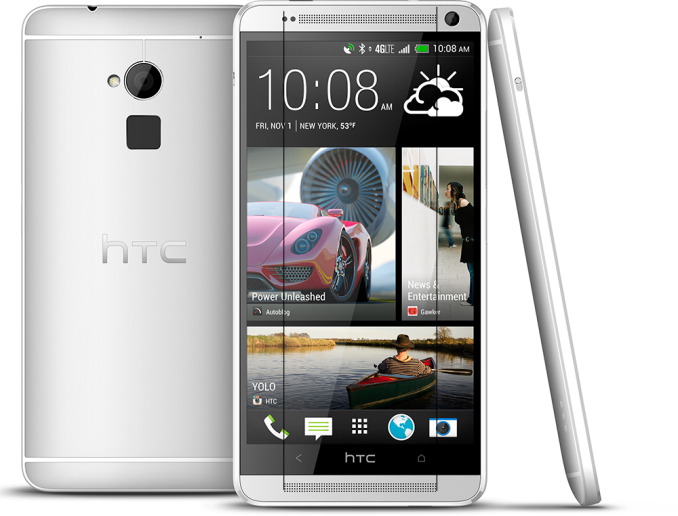
Now you also won't be able to unsee it (lines added to show asymmetry)
Let’s talk about the speaker grilles for a moment. What I loved about the original One design was how balanced everything felt. The polymer strips required for the antenna array carried over to the front and felt logical, it seemed like each cut had a purpose. On the One max however, I can’t get over how the speaker grille dots aren’t lined up and symmetrical at top. Something bugged me about the One max’s appearance for a few days until I noticed exactly what didn’t seem balanced anymore, so there’s that. I hesitate to make a big deal about it, but it might be a microcosm of what’s really weird about the One max.
The One max also takes a nod from a few of the Asian variants of HTC One which featured a removable back to accommodate two SIMs (when necessary) and a microSD card slot. The One max makes the removable back and microSD card slot standard, in addition to eschewing a SIM tray and enabling design commonality when dual SIM is necessary. What it doesn’t add is a removable battery, since HTC continues its use of a pyramid-like stack of display, battery, and PCB. Peel up the label and you’ll find out you’re looking at the top of some EMI cans and shielding rather than a battery, validating that. At the bottom of the HTC One max there’s no longer a Beats Audio silkscreen (since that partnership is over), instead just blank empty space. The nice thing about having the removable door is that the regulatory markings are on the inside, there’s no laser etched part and model text on the bottom third of the One max.
There’s a small slider on the left side of the One max which pops the removable door open, it then hinges and comes off completely.
There’s definitely a tradeoff associated with this approach though. For starters, although there isn’t much flex or play in the door after it’s attached, it requires a lot of effort to make sure the door is completely seated when re-attached. In addition there’s definitely a gap at top and bottom, which is unfortunate given HTC’s narrative about zerogap construction for the original One.
The only caveat is that the One max myself and a few others were sampled was in fact a PVT (Production Validation Test) as marked, so it’s possible the door is being slightly tweaked, but I doubt it’ll change much. I’ve said my part already on microSD cards and the fact that they’re going the way of the dodo in smartphones, I just don’t need one anymore, and definitely not at the expense of build quality. It is convenient not having to use a SIM ejector tool though, even if I carry one around all the time anyways. For the incredibly small percentage of users that clamors for an SD card every single smartphone launch, it’s at least one point which won’t be belabored so tiresomely this time.
In a lot of ways the construction of the One max is more like the One mini, and I fear that comes hand in hand with making what was an expensive design (the One) profitable, something HTC does need. It still is premium and combines metal and plastic in a pleasing way, but there clearly were tradeoffs on the road to the One max.
The One max isn’t so much a phablet as it is a huge phone. I don’t know if the supersized phone market is quite mature enough to really tell what the defining properties for a phablet are yet, but the scaled up One design makes the One max feel like a huge phone. HTC doesn’t go for an active digitizer and slide-out stylus with the One max, there’s an optional capacitive stylus that’s a standalone accessory, and the scribble application I’ll get to in a bit. I don’t think there’s anything wrong with that approach quite honestly (I wager not many Note users actually use the stylus), it’s just something to note.
HTC Power Flip Case
HTC also sampled their new battery case, which is like the flip case we saw for the One but includes a battery in the screen cover portion. Think the Surface’s new Power Cover, but for the HTC One max. The power flip case uses three pogo pins to connect the battery directly to the One max, it’s what the pogo pads on the back of the phone are for. The case snaps on around the perimeter of the One max, and the front portion folds over the display, just like the flip case. The units we were sampled weren’t final however, and had some issues with proper fit, although fit should be rectified in the final version.
The battery isn’t huge, at 1210 mAh and 3.75V (4.53 watt-hours), but it does give a boost as I’ll show in the battery section. It also does add weight what is already an unmistakably heavy phone, and makes using the fingerprint scanner a bit more awkward.
When the power flip case is attached you get a small plus sign on the battery symbol in the status bar. I’m not sure how this actually works in practice, as the One max seems to draw from both the internal battery and the external battery at the same time, rather than using the external battery to charge the internal one. It does boost battery life however.


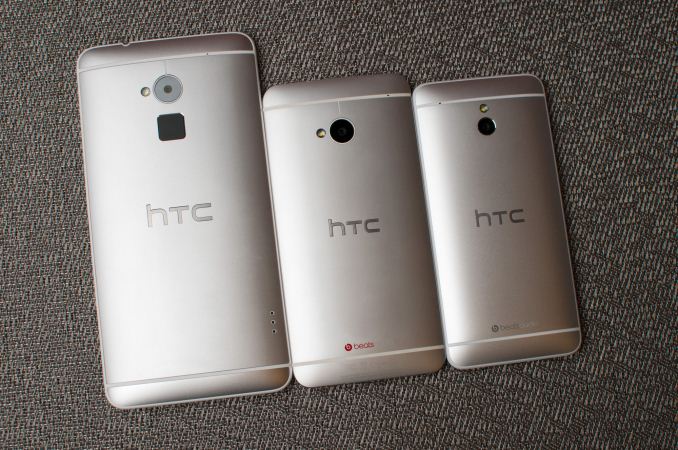
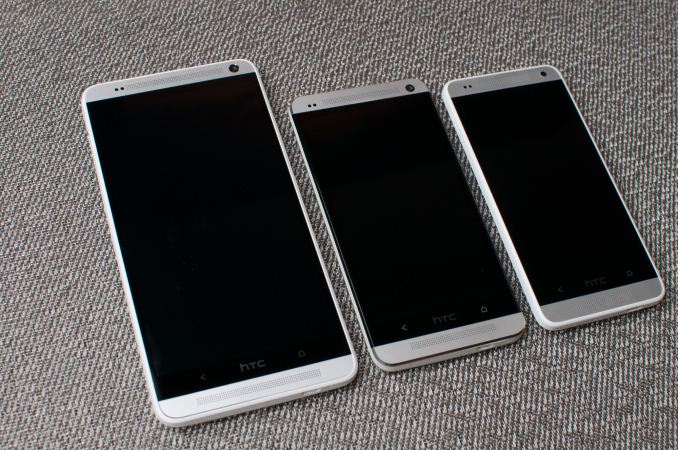
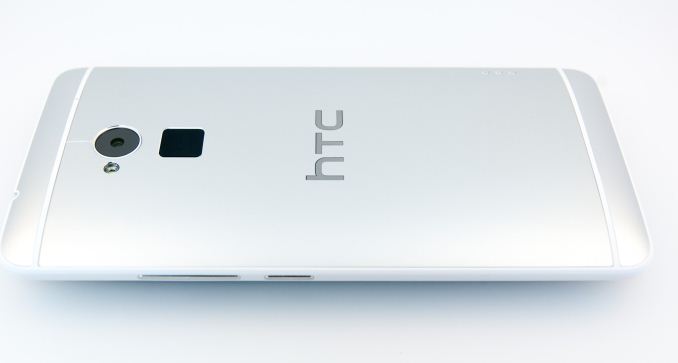
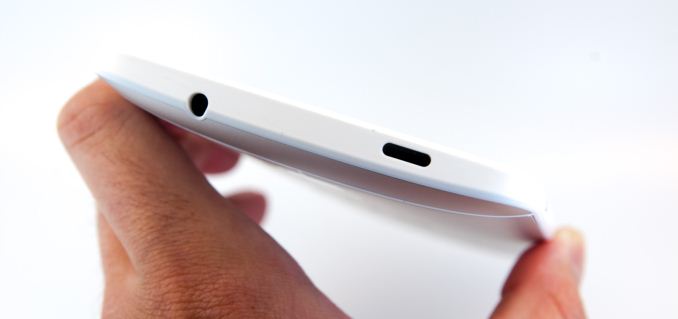
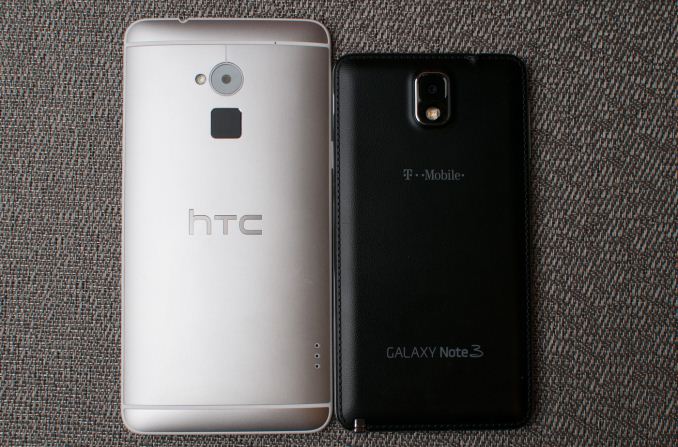
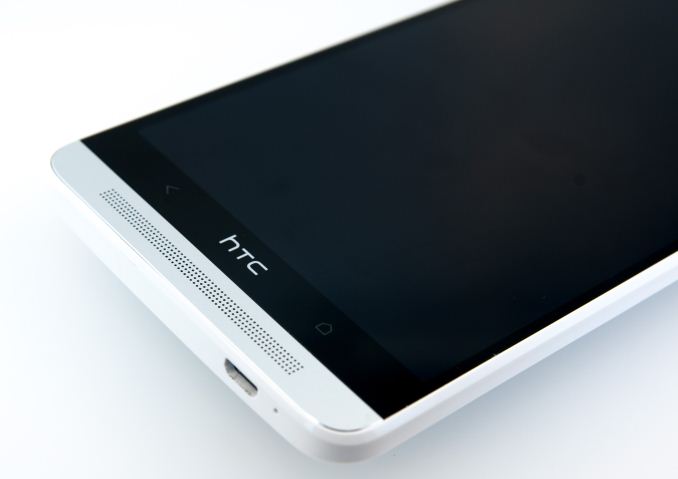


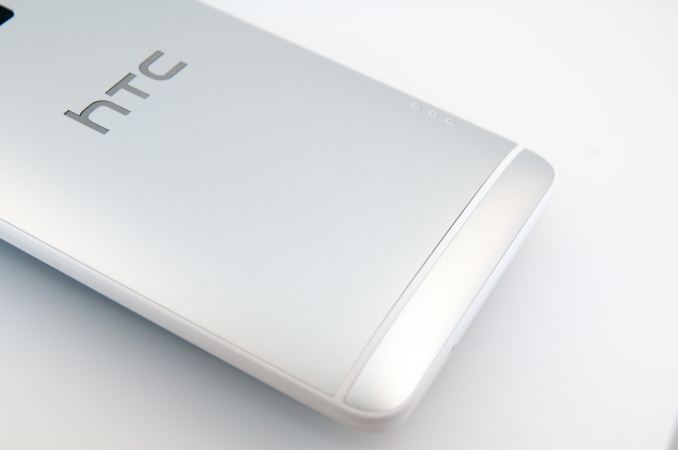
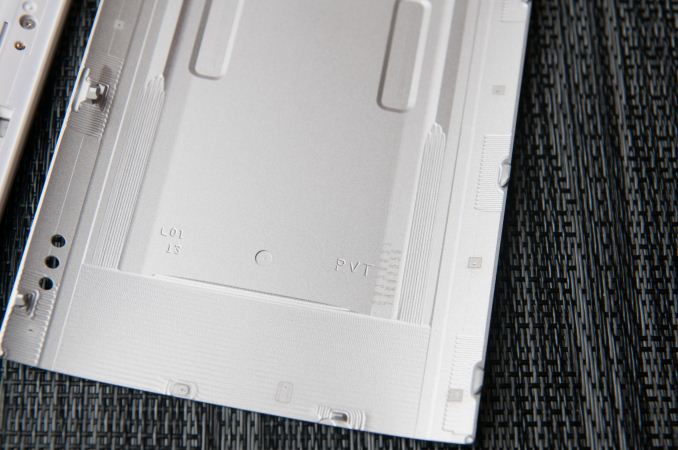






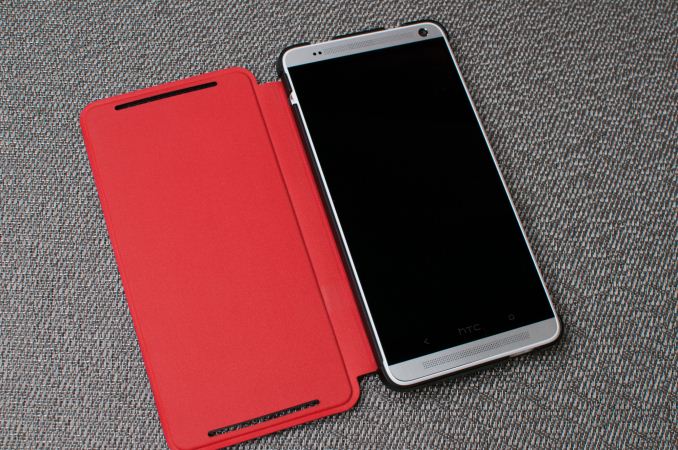
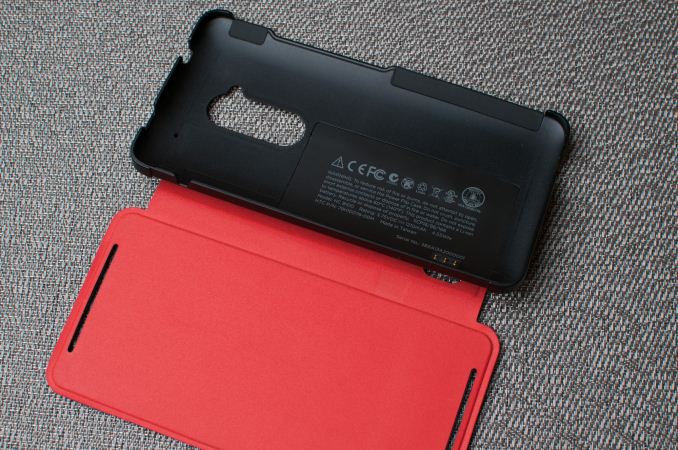








197 Comments
View All Comments
dawp - Tuesday, October 29, 2013 - link
please allow us to flag these spammers on the front page like we can in the forumsmregan - Tuesday, October 29, 2013 - link
Brian,Did you notice the problem that Zoes included in a highlight video now only show 1 second of motion and then freeze? I've seen that one my One when I upgraded to 4.3 and others have reported the same issue. It really seems like a bug. The highlights become much more static. All the other highlight changes are great but this is a step backward.
Thanks,
Mike
frakkel - Tuesday, October 29, 2013 - link
I for one really appreciate that Brian has an opinion and sticks to it. He sets the quality bar high and let his opinion shine through when quality is not met.Speaking of quality I am happy to see that the different brands go more and more up in quality of the device and not only specifications. Of course some users prefer an easy setup and others prefer fully customized solution. Here I am sure that the latter group is far the smallest but this group still gets fully addressed by some of the biggest players in the market. This is impressive I think.
For me personally I am sticking to my work phone, which is an old blackberry and I can live with this situation. But if I am going to put my money toward a smartphone I for one also would go for build quality. Today I am not sure which one but it would probably be a Nokia (I have owned Nokia phones before and were happy with the build quality), HTC (I for one also like the metallic casing) or and Apple (The small form factor is for me a positive thing).
So to rap up. Brian stick with you preferences some likes some hate. But his is expected when an opinion is given.
Disclaimer: I am not a native speaking so my grammar and language errors should be overlooked.
Dentons - Wednesday, October 30, 2013 - link
I can respect an opposing opinion as much as the next guy, but when it's delivered in Brian's smug, "I know what's best for everyone" attitude, it's a bit much to digest.MercuryStar - Thursday, October 31, 2013 - link
I didn't interpret it as being smug. For that matter, I didn't interpret it as an opinion, either. Take his claim that microSD slots are going the way of the dodo. I think you can objectively look at how many devices include microSD card slots and conclude that it's no longer the norm in Android devices outside of Samsung and Sony, and also objectively look at how Android is engineered and conclude that they don't seem to be accommodating microSD slots in their OS design anymore.I don't think you should interpret this observation as an indication that Brian hates microSD card slots or something, he's just making an observation. In the case of this handset he felt that the removable back for the microSD reader compromised the design and I agree - it's heavier, bulkier and means it's no longer a gapless unibody design. But if the device had included a microSD slot on the side or something, so as not to compromise the design, I don't think this would have been a problem.
GiantPandaMan - Tuesday, October 29, 2013 - link
Please stop using the word literally incorrectly.It should only be used when you could take the something either figuratively or literally.
IE-
"He blew up."
"He got popular?"
"No, literally he blew up. The dynamite he was carrying exploded."
Saying a phone is literally a larger version of another phone is unnecessary. The phone is a larger version of another phone.
Arbie - Tuesday, October 29, 2013 - link
"For the incredibly small percentage of users that clamors for an SD card..."How about the incredibly small percentage of users who obsess (for pages) over the color and finish on the phones? Oh wait - that's you guys at Anandtech.
I just bought a smartphone with an mSD slot BECAUSE it had an mSD slot. Money where mouth is; vendors, listen up.
onslaught86 - Tuesday, October 29, 2013 - link
I have a real soft spot for HTC. My first smartphone was the Apache, and for all its ridiculousness, I loved it. Followed by the Titan, a brief flirtation with Samsung's WinMo lineup for the Omnia, then the mighty HD2 - which is still my favourite smartphone experience due to the mad levels of developer support & fully functional Android + Windows Phone 7 ports. I've now been with Samsung for the life of the Galaxy S line, jumping on the Note bandwagon after the S III, and although I (genuinely) enjoy the functionality of Touchwiz, I'm getting sick of a few things that just haven't been fixed through three or four revisions of their software suite.I kept wanting HTC to make something that would tempt me away - had they shipped the international Evo 3D closer to the Galaxy S II's release, I'd have picked that up instead. Yet, for the past two years, there's been too many compromises - both the One X & the One disappointed in the battery life department above all others, something I'm not keen to compromise on. Especially so after the Note II set a hefty precedent.
Then there's the SD card argument. Given the instability & low quality of the memory, combined with the poor and confusing experience SD cards can give consumers, I don't mind that they're going out of vogue. Wouldn't store anything crucial on something so volatile. Although in principle I wholeheartedly support user-accessible upgrades, SD slots are no excuse for insufficient internal storage, as everyone with a '16GB' Galaxy S4 discovered. For my use-case, however (Swapping between devices regularly, keeping a lot of lossless music offline, and storing backup images), an SD card slot is a definite point towards a device.
Now, for the first time in 2+ years, HTC have made a device that ticks the most important boxes - screen size, battery capacity & run-time, expandable storage. I can deal with the size, I'm a Note fan (Also have the 5.9" Pantech Vega N°6, which is a mammoth device). Although flip cases are not my bag, a portable kickstand with 20% extra battery sounds fantastic. The metal build, the stereo speakers, the SLCD when I'm getting awfully sick of poorly calibrated AMOLED panels, it all stacks up. They're even taking proper advantage of the screen size with a 5x5 home screen grid, Samsung's persistence with 4x4 on the Note II & 3 is baffling to me. The lack of OIS is a downer, I do love and use the S Pen regularly, the lack of S800 is almost deal-breaking, and yet...
HTC have finally made a device that appeals to the core of my smartphone experience, and I feel compelled to give them money in the hopes they keep doing this.
Arbie - Wednesday, October 30, 2013 - link
Don't belabor it tiresomely.Arbie - Wednesday, October 30, 2013 - link
@DavidjanThanks for the tip on the Meenova OTG-SD card adapter! I just went and bought one, even though I don't yet have an Android device. I will someday, and this is too good to pass up. Plus, such a tiny company could disappear. BTW I lobbied Sandisk, Transcend etc a year ago for something like this but those that replied said it couldn't be done...
As for Brian Klug's comment that microSD is "going the way of the dodo": He probably thinks that means an evolutionary death. In fact the dodo was killed off by idiots with no concern for the future. There's nothing "natural" about losing microSD - it packs huge amounts of affordable storage in a tiny, rugged, hot-swap package. It should rightfully be with us for many years. Unfortunately, it's being marketed out existence by tablet makers pushing internal RAM, telecom carriers pushing data usage, and probably even Hollywood.